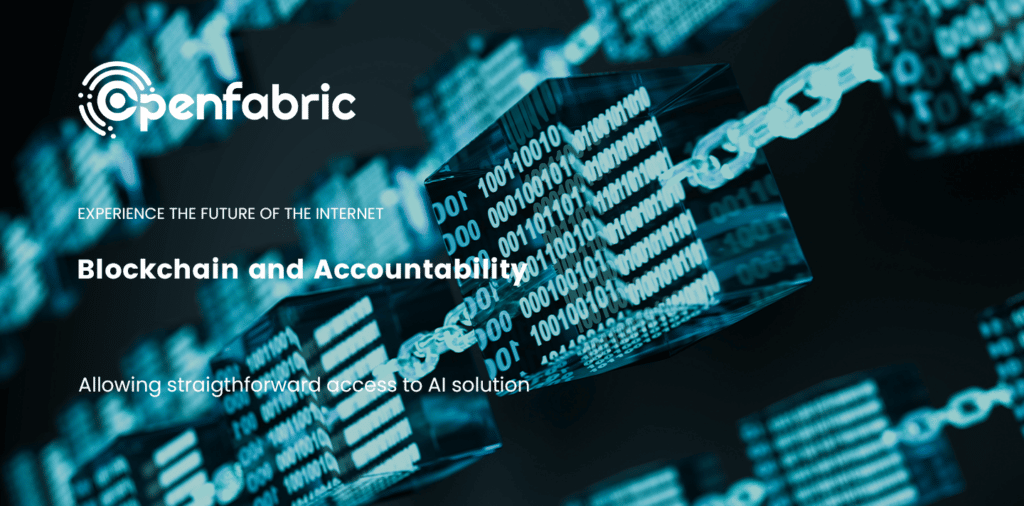
August 3, 2022 4 minutes read
Blockchain and Accountability

Ever since the inception of Blockchain, accountability has remained an active topic of concern in the community as well as for business owners and researchers. The main concern stems from the huge amount of decision-making power that these systems are believed to possess. Despite this, there is a way in which blockchain can be used for model development governance. This paves the way for accountability and makes the whole decision-making process more transparent and auditable.
The Post Blockchain Landscape
Before the advent of blockchain, various analytic model management approaches were implemented by organizations. The major drawbacks of using an analytic model included its short lifespan and inefficiency. There was a great possibility of introducing bias into the system due to the selection of inappropriate variables. Model sensitivity and target leak also occurred in such cases. The maintenance of an analytic model also depended on the data scientist who developed the model. For instance, if the data scientist left the organization, the code was either deleted, or even if it survived in some form, it was difficult to understand the assumptions that were considered while developing the code.
Enter the Age of Blockchain
In his article, data scientist Scott Zoldi details how he uses blockchain technology to implement an analytic tracking document (ATD) that codifies analytic and machine learning model development. This approach not only solves the issues that previously came with analytic models but also makes the decision-making process trackable, auditable, and accountable.
Building Accountability Into Blockchain
A number of different approaches can be used when it comes to building accountability in an AI or blockchain. As per the U.S. Government Accountability Office, a framework was developed that defines the basic conditions for accountability in the AI lifecycle. As opposed to the typical approach of asking questions once the model has been developed, this framework focuses on assessments throughout the lifecycle. It includes the following four dimensions:
- Governance
- Data
- Performance
- Monitoring
Going a bit deeper, within each of these listed areas, there are a few important points to take into consideration.
While assessing the governance structures, ethical values must be demonstrated and compliance must be ensured. Accountability is fostered by instituting clear goals and objectives for the system, defining roles and responsibilities properly, and having a broad set of stakeholders and risk management processes. Furthermore, it is also important to consider system-level governance elements.
Understanding the data is crucial in building accountability as it is the lifeline of an AI or blockchain system. Documenting how the data is being used is very important. The sources and origin of the data must also be carefully scrutinized to avoid any tampered data that might introduce bias in the system.
Once the system has been developed, it is time to define the performance goals and metrics. The performance review must factor in why the system was built in the first place and how successful is it in managing to achieve that target.
Lastly, reviewing the monitoring plans should be an ongoing process that continues to evaluate the system’s performance. It should also include answers to important questions like under what condition should the system be retired.
Balancing Privacy and Accountability
Balancing privacy and accountability in the blockchain is a major problem. The early blockchain-powered cryptocurrencies suffered from the privacy issue. Anonymity was also problematic for real-world scenarios as institutions have to follow KYC (Know Your Customer) and AML (Anti Money Laundering) rules. A novel approach to solve this issue is discussed in the paper titled, Balancing Privacy and Accountability in Blockchain Identity Management. The authors explore a novel approach that involves the introduction of an ‘identity layer’ that not only provides privacy to the user but also maintains compliance with the current regulations. A more detailed explanation of the architecture can be found in the complete paper.
Conclusion
Even though we still have a long way to go in building trust and transparency in the blockchain ecosystem, a lot of work is being done to introduce more accountability into the blockchain ecosystem. A lot of research work is being done to develop such models that further the cause.
Platforms such as Openfabric take this mission very seriously. At Openfabric we do our level best to make sure all the latest compliances and regulations are met and users get the most value from the platform. We also take good care in scrutinizing the data sources and making sure that no biases are introduced in the models. Through implementing the latest technologies and partnerships with the leading players in the industry, we have ensured that users also get the best possible output from the platform. In this quest for accountability in the blockchain world, Openfabric is one of the leading voices. To learn more about our platform and how it functions, stay tuned to our social media channels such as Twitter, Telegram, Linkedin, Facebook, and Youtube.

